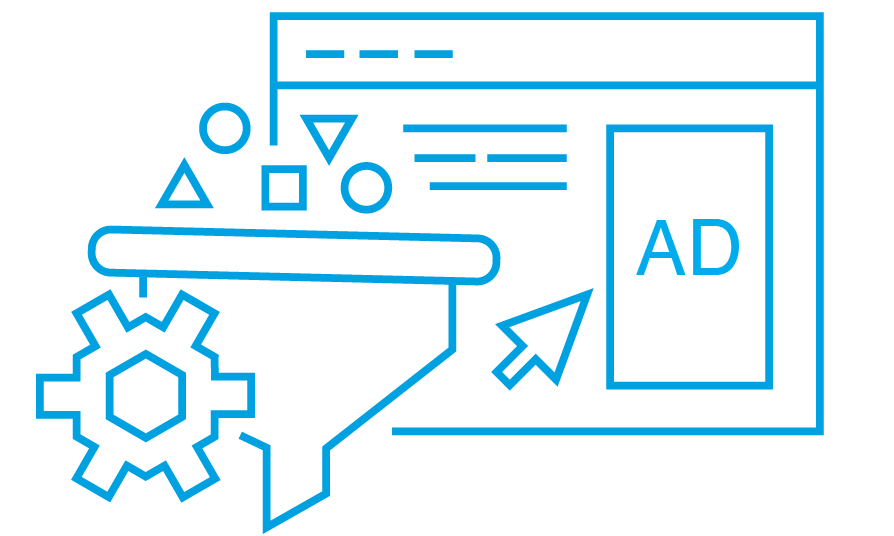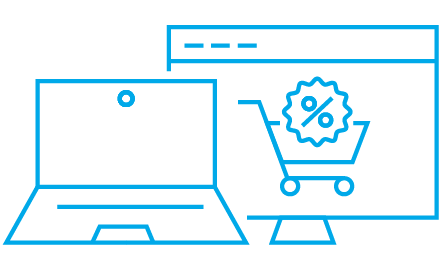- Enhanced User Privacy in Browsers
- What Is The Industry Approach to Third-Party Cookie Demise?
- What Are Third-Party Cookies?
- What Is Third-Party Data?
- What Is The Difference Between Third-Party Cookies and Third-Party Data?
- Why Third-Party Data Won't Be Affected by Third-Party Cookies Demise
- How Has OnAudience Prepared for the Cookieless Future?
In the fast-changing world of digital tech, understanding the difference between third-party cookies and third-party data can be tricky. Since Google implemented tracking protection for testing purposes on January 4, 2024, it’s more important than ever to grasp the unique roles and impacts of these two elements.
Enhanced User Privacy in Browsers
The tech industry has responded to the heightened awareness of user privacy by implementing significant measures to enhance online privacy. Notably, Safari led the way by proactively blocking third-party cookies on September 17, 2013, followed by Mozilla Firefox on June 1, 2021.
Furthermore, Google has been actively developing privacy-focused solutions within the Privacy Sandbox initiative, including the introduction of Tracking Protection. This feature commenced its testing phase with 1% of users on January 4, 2024, with plans to gradually extend its coverage to 100% of users by Q3.

Google, in response to the changing landscape of online privacy, and with 64.7% of browser market share, developed the Privacy Sandbox initiative in collaboration with industry stakeholders. Within this initiative, the Topics API was introduced to enable interest-based advertising while preserving user privacy.
An update from Google regarding third-party cookies demise
On July 22th, 2024 Google announced a significant change in its approach to third-party cookies. The company has decided to abandon its plan to phase out third-party cookies in Chrome. Instead of eliminating these cookies, Google will introduce a new feature in Chrome that allows users to choose their privacy settings, including whether to allow or block third-party cookies across their web browsing experience. This decision marks a major shift from Google’s previous stance and has significant implications for the digital advertising industry, online privacy, and user choice.
What Is The Industry Approach to Third-Party Cookie Demise?
The AdTech industry is skeptical about the Topics API solution as it is anticipated to have a significant impact on user experience and efficiency in targeting. Consequently, companies are actively seeking alternatives before Google’s plan to roll out cookies for all users by the end of 2024.
As a result, there is a growing interest in exploring alternative methods that are based on cookieless solutions and can achieve the same advertising objectives while addressing the privacy concerns associated with traditional tracking technologies.
What Are Third-Party Cookies?
Third-party cookies are data files created by domains other than the one a user is currently visiting. They were designed to store personalization preferences and tracking information. These cookies enable the storage and transfer of user-specific data across different websites, allowing for the tracking of user behavior and the facilitation of targeted advertising beyond the confines of the originating website.
As the digital landscape evolves, the utilization of third-party cookies faces increasing constraints due to privacy concerns and regulatory changes, leading to a paradigm shift in online data tracking methodologies.
What Is Third-Party Data?
Third party data is essentially information that is gathered by entities not directly participating in a specific transaction. In contrast to first party data, which originates from a company’s own customers, third party data is sourced from external outlets like data brokers, social media platforms, or other businesses.
This data can be stored in first party cookies, and the categorization of first and third party data is determined by the entity responsible for its collection, rather than the storage method.
What Is The Difference Between Third-Party Cookies and Third-Party Data?
As Google announced its decision not to support third-party cookies, there has been a growing confusion within the industry regarding the distinction between third-party cookies and third-party data. Some have expressed concerns that third-party data providers may no longer be able to offer reliable data due to the obsolescence of third-party cookies, leading to misconceptions about the impact on third-party data.
However, it’s important to clarify that the impending demise of third-party cookies will not directly impede the availability or reliability of third-party data, as these two elements serve distinct purposes within the digital ecosystem.
- Third-Party Cookies
Third-party cookies are small pieces of data created by a website other than the one a user is currently visiting. They are commonly used for cross-site tracking and online advertising, allowing external entities to track a user’s online movements across different websites.
- Third-Party Data
Third-party data refers to information collected by organizations or entities from a variety of sources other than their own, which may or may not involve the use of third-party cookies. Third-party data may operate on other identifiers than cookies, such as mobile identifiers and alternative IDs which means they can be entirely cookieless.
Why Third-Party Data Won’t Be Affected by Third-Party Cookies Demise
The impending cessation of third-party cookies by Google Chrome in 2024 will not directly affect third-party data. Unlike third-party cookies, which rely on tracking user behavior through browser-based identifiers, third-party data is obtained from various sources and can be utilized independently of cookies.
Organizations can continue to leverage third-party data for audience targeting, personalization, and analytics even in the absence of third-party cookies. Therefore, while third-party cookies are facing obsolescence, third-party data remains a valuable resource for organizations in the AdTech and marketing industries.
- Autonomous Cookies: Third-party data encompasses information gathered from various channels beyond a website’s direct interactions, including demographic details, user preferences, and behavioral insights, and can be utilized independently of cookies. Consequently, organizations can continue utilizing third-party data for audience targeting, personalization, and analytical purposes even in the absence of third-party cookies.
- Diverse Data Origins: Third-party data can be sourced from external entities, data providers, and diverse origins, enabling organizations to acquire insights into user behaviors, preferences, and demographics from a wide spectrum of sources. This facilitates effective audience targeting and personalized marketing endeavors.
- Significance in Audience Targeting: Third-party data remains a valuable asset for businesses in the AdTech and marketing sectors, providing pivotal insights that can enhance audience targeting, personalization, and analytics strategies, irrespective of the constraints posed by the lack of third-party cookies.
How Has OnAudience Prepared for the Cookieless Future?
As a leading data provider, OnAudience prioritizes user privacy and the delivery of high-quality data to its partners. In anticipation of the shift towards cookieless advertising, OnAudience is well-prepared to offer cookieless targeting solutions including
- Mobile data for targeting based on MAIDs (Mobile Advertising Identifiers), not cookies which will not affect our data capabilities when third-party cookies will be demised.
- Database based on alternative identifiers such as UID 2.0, EU ID, HEMs, and ID 5.
- Raw Data combined with the contextual targeting provides more information on user activity.
- OnAudience Identity Graph allows to get a holistic customer overview from various devices.



